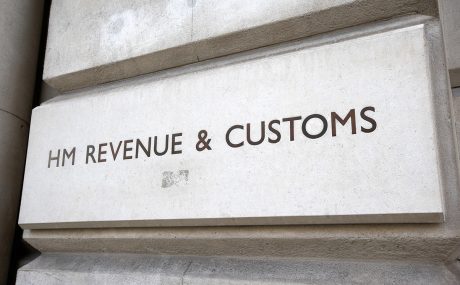In article first published in the 18 July edition of Tax Journal, Matthew Greene and Guy Bud considered a dispute arising in the context of an appeal by a taxpayer against a number of HMRC determinations issued without clear reasons or justification.
Few case management decisions at the First-Tier Tribunal (“the Tribunal”) are published. It was with particular interest, therefore, to see a whole flurry appear in a single decision in the case of BGC Services Holdings LLP v HMRC [2025] UKFTT 700 (TC).
The dispute arose in the context of an appeal by a taxpayer against a number of HMRC determinations issued without clear reasons or justification. This wide-ranging decision addresses several interesting aspects of Tribunal procedure, as well as the relationship between HMRC’s statutory and public law duties. It is a revealing treatment of the legal nature and extent of the Commissioners’ obligation to properly particularise determinations of tax liability both outside and inside the Tribunal.
Procedural background
Although the case turns on procedural issues, it is worth touching briefly on the background. The taxpayer (“the Appellant”) is a limited liability partnership and part of the BGC Group, which carries on business in financial services.
The Salaried Members Rules (“SMR”) were introduced into the Income Tax (Trading and Other Income) Act 2005 in 2014. Shortly afterwards, HMRC wrote to the taxpayer asking for information to determine whether the SMR might apply to them. This initiated a protracted investigation spanning nearly eight years and touching on a range of tax issues.
Finally, HMRC issued a series of Regulation 80 determinations for the tax years 2017/18 to 2019/20 in 2024 (“the Determinations”). The unpaid tax was stated to be due pursuant to Regulation 67G of the Income Tax (PAYE) Regulations 2003. Aside from this, no information was provided about the basis or rationale for the determinations. HMRC did, however, claim that the determinations were “self-explanatory”.
There was also no explanation as to why HMRC believed it was able to issue determinations for 2017/18 and 2018/19, which were made outside the time limits in the Taxes Management Act 1970.
The procedural dispute
The taxpayer appealed to the Tribunal. Given the lack of detail in the Determinations, it proceeded on the assumption that these were based on the allocations of profit to its members under the SMR. It stated simply as Grounds of Appeal that the Determinations were “incorrect in both fact and law”.
HMRC applied to the Tribunal for further and better particulars of the taxpayer’s Grounds of Appeal. It made two separate arguments:
- The Appellant is required to set out the basis on which an appeal is brought and to explain why it believes the impugned decision is incorrect.
- The Appellant “has known or now knows for certain” that the dispute arose under the SMR and therefore had sufficient basis to explain why these were not applicable on the facts.
HMRC argued that since the burden of proof lies with the appellant in any appeal, it fell to the Appellant to specify why the determinations were incorrect. Asking for particulars from HMRC would be to reverse the burden. HMRC said it had been highly prejudiced by the lack of particularisation in the Notice of Appeal, not knowing what case it had to meet and, therefore, being unable to provide a Statement of Case in time.
As far as the out-of-time Determinations went, HMRC accepted that the burden lay on it to explain how they had been issued in time but contended that the taxpayer was nonetheless obliged to state why it considered the Determinations to be out-of-time.
The Tribunal’s view
The Tribunal rejected HMRC’s application for further and better particulars.
In its treatment of HMRC’s authorities, the Tribunal began by distinguishing the authorities on which HMRC had relied to argue for the burden being on the Appellant. Although superficially similar, Rapid Brickwork v HMRC [2015] UKFTT 190 concerned a case in which HMRC provided the taxpayer with a six-page letter setting out detailed reasons for its assessment. This was in clear contrast to the situation in this case, where HMRC had failed to provide any details at all of the grounds for its Determinations. Bluecrest v HMRC [2025] EWCA Civ 23 similarly dealt with a case in which the taxpayers were “well aware of the reasons why HMRC had issued the Determinations” in question.
On the other hand, the Tribunal emphasised HMRC’s public law duty to give reasons. It quoted Lady Justice Arden’s comments in HMRC v Bupa Purchasing [2007] EWCA Civ 542, in which she said: “It is common ground that as a matter of public law the Commissioners must provide the basis on which they make an assessment. In other words, they must supplement the assessment with a notification of the reasons. But this duty is grounded in public law, and not in the statute.” [Our emphasis]
The Tribunal observed that parliament could reasonably have decided not to set out such duties expressly in the drafting of the relevant legislation without intending to oust such obligations altogether.
Finally, the Tribunal observed that the taxpayer had filed its Grounds of Appeal in accordance with Rule 20 of the Tribunal Procedure (First-tier Tribunal) (Tax Chamber) Rules 2009 and had done “all it could” to respond to the information provided in the Determination. Once this step was completed, the drafting of Rule 25 was clear that HMRC “must” deliver its Statement of Case. Moreover, the Statement of Case must correspond to Rule 25(2), which states: “2) A statement of case must— (a) in an appeal, state the legislative provision under which the decision under appeal was made; and (b) set out the respondent’s position in relation to the case.”
The Tribunal implied that the Statement of Case was required to set out the respondent’s position in the case independently of any specific points highlighted in the Appellant’s Grounds of Appeal.
Overall, the Tribunal was scathing about HMRC’s approach. HMRC had made a “broad brush decision and are now asking the Tribunal to assist them in requiring the Appellant to colour in the detail”, a responsibility which HMRC could not delegate to the Appellant taxpayer as a matter of public law and Tribunal procedure.
HMRC strikes back
Surprisingly, HMRC persisted. It filed a second application for permission to appeal against the Tribunal’s decision on the first application. It contended, among other things, that the judge had erred in law in founding her decision on public law duties, duties which “do not apply in the context of the detailed procedural rules”.
Contrary to HMRC’s contentions, the Tribunal clarified that the decision had been “founded” on the interpretation of Rule 20 rather than on any public law argument. The judge stated: “HMRC supported their submission by referring to various judgments, including Bluecrest and Allpay Ltd v HMRC [2018] UKFTT 273. The latter said that an Appellant must provide sufficient detail in its grounds of appeal to: ‘give the party opposite sufficient notice of the case which is being made against him; what is important is that the pleading should make clear the general nature of the case of the pleader; pleadings are critical to identify the issues and extent of the dispute between the parties’.
“That is of course correct […]. However, that normal position is predicated on HMRC having first made a reasoned decision against which the appellant has appealed.
“The position is different where, as here, HMRC have given no reasons at all for their decisions. In that situation, the Appellant can only do its best on the basis of what HMRC has provided, and that is what has happened in this case. There was no error of law in my finding that the Appellant had satisfied the requirements of Rule 20.”
The Tribunal also flatly rejected HMRC’s assertion that “public law duties do not apply” in the context of the Tribunal rules for the reasons summarised by Lady Justice Arden in Bupa whether or not they were explicitly integrated into the legislative text.
HMRC’s application also sought to challenge the decision on a “burden of proof” basis, ie that the Tribunal judge failed to consider that the burden of proof lies with the Appellant, and accordingly, the Appellant should have provided the further and better particulars.
On this point, the Tribunal judge concluded that “it is not an error of law to hold, as I did in the First Decision, that where HMRC have failed to give reasons, they cannot simply rely on the burden of proof and require the Appellant to provide [further and better] particulars to ‘colour in the detail’ of HMRC’s own decision”.
The Tribunal cited Kingsley Douglas v HMRC [2021] UKUT 0163 (TCC), where the Upper Tribunal held that while the burden of proof in the proceedings lies with the appellant, this burden arises only after HMRC discharge a prior burden, ie that of showing that they have “fairly consider[ed] all material placed before them and, on that material, come to a decision which is one which is reasonable and not arbitrary as to the amount of tax which is due”.
For substantially these reasons, the Tribunal found no error of law in the rejection of the First Application and that “none of the grounds of appeal give HMRC a reasonable prospect of success”.
The taxpayer responds
Having failed in its two procedural applications, HMRC reluctantly conceded defeat and filed a statement of case with the Tribunal. The problem was that the statement of case itself failed to address several key issues, including the factual basis for the Determinations, how the SMRs were said to apply to the Appellant, which partners the SMR applied to, and how the total alleged liability had been calculated.
The Tribunal was not impressed by HMRC’s account of the reasons justifying the issuing of the Determinations and the standard to be met under Rule 25(2). It drew on the review of authorities, including Allpay Limited v HMRC [2018] UKFTT 273 (TC), in which the First-Tier Tribunal had stated: “The Tribunal’s rules require HMRC to set out its position in respect of a case; what that means is that HMRC should explain its position in sufficient detail to enable the appellant to properly prepare its case for hearing. Anything less may lead to injustice. […] If the person with the burden of proof was required to prove everything, even those matters which the other party had not clearly disputed, then preparation for, and hearings of, appeals would be much longer and a great deal of time and money would be wasted. Moreover, trial by ambush is not justice: each party should be able to prepare to meet the other party’s case in advance of the hearing to increase the likelihood that the outcome of the appeal will be in accordance with the true facts of the case. Each party must therefore state in advance in summary terms what is in dispute and why.”
Allpay was quoted approvingly in Kingston Maurward College v HMRC [2023] UKUT 69 in which the Upper Tribunal agreed that the application of these principles would depend on “the particular level of detail which will be sufficient to enable an appellant to properly prepare, will depend on the circumstances of the particular appeal”.
In order to assess whether HMRC had met this standard, the Tribunal proceeded to review “each of HMRC’s reasons for issuing the Determinations” as set out in the Statement of Case. The impression was clearly poor. HMRC had made various allegations about what the taxpayer had or had not done during the investigation, which seemed factually dubious. On the issue of the out of time Determinations, it had gestured darkly to “circumstances”, without providing any actual information about what this meant.
The Tribunal concluded, reasonably, that HMRC had failed to set out “key part of their legal and factual case” and issued directions ordering HMRC to explain its case on certain key points.
HMRC’s riposte
HMRC appealed against the Tribunal’s decision as wrong in both fact and law. HMRC’s main argument was that “because the Appellant said in its Grounds of Appeal that the Determinations were ‘incorrect in both fact and law’, this was the case to which HMRC had to respond, and they had complied with that obligation”. As such, the Tribunal had erred in looking at the basis for making the Determinations.
Given the Tribunal’s conclusion on all previous applications, this was a bold position to take. Unsurprisingly, the Tribunal rejected it. It ignored the fact that HMRC’s obligation under Rule 25(2) was to provide sufficient detail to enable the taxpayer to prepare its case properly. Here, “the Appellant was unable to provide more detailed grounds because HMRC had given no reasons at all for the Determinations”.
The Tribunal noted that “HMRC assume that the starting point for a tax appeal is the grounds submitted by an appellant, read in isolation from the decision being appealed”, which was a clear misreading of the Tribunal’s jurisdiction under s 49D TMA 1970. This empowered the Tribunal to “decide the matter in question” once an appeal had been brought. This referred to the substantive basis of the appeal and, therefore, the “decision which had been made”.
Concluding that “an appellant’s grounds of appeal are a response to a decision made by HMRC” and therefore encompass that decision, the Tribunal approvingly quoted King v Walden [2001] TC 822 to the effect that an appeal “is essentially a defensive step, rather than defensive” in relation to HMRC’s exercise of its assessment powers.
HMRC also raised several more speculative points about the Tribunal’s approach to the applications and its case management powers. These, too, were rejected. HMRC’s permission to appeal was, therefore, refused.
Conclusion
It is hard to read this decision without feeling considerable sympathy for the taxpayer and, indeed, for the Tribunal. We have no view over the substantive merits of the case, but procedurally, it appears to have been handled poorly from the outset. Above all, it seems that HMRC’s refusal to recognise and respond to the obvious flaws in the Determinations has compounded the problem, adding to the taxpayer’s costs and soaking up a substantial amount of the Tribunal’s time. It would have been far better for all concerned if HMRC had simply acknowledged the problem and sought to remedy it to the best of its ability rather than seeking to shield itself behind a range of increasingly speculative procedural arguments.
More worryingly, this points to a concerning trend for procedural requirements and safeguards to be treated as irrelevant box-ticking exercises within HMRC without regard to the genuine rationale that underpins them. The moral and practical rationale for a taxpayer to understand why HMRC believes that unpaid tax is due is so fundamental that it should not need to be explained. It is hoped that such concerns would motivate HMRC in all aspects of its role.
The Tribunal displayed remarkable restraint in this case, even refusing the taxpayer’s request for a barring order until HMRC complied with the directions for more information to accompany the Statement of Case. It seems unlikely that the High Court would have shown such patience in similar circumstances, and a more aggressive use of the full range of the Tribunal’s case management powers may be worth further consideration.
Proximately, however, this decision’s powerful treatment of the authorities relating to HMRC’s obligation provides a useful reference point for understanding the true nature of an appeal by a taxpayer to the Tribunal. It highlights the importance of HMRC’s obligations to communicate its reasons for a Determination and shows that the Tribunal will not compel appellants to do HMRC’s work for it.
You can find further information regarding our expertise, experience and team on our Tax Litigation and Resolution page.
If you require assistance from our team, please contact us.
Subscribe – In order to receive our news straight to your inbox, subscribe here. Our newsletters are sent no more than once a month.







